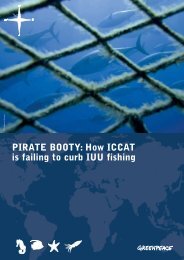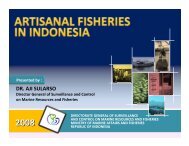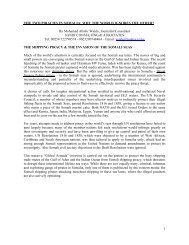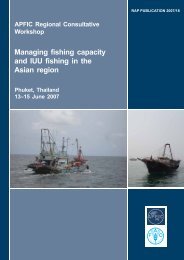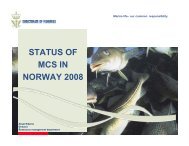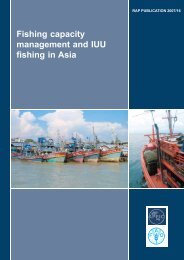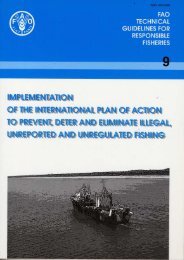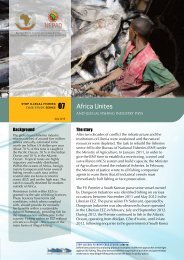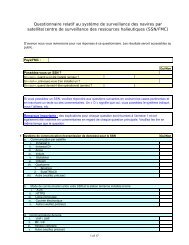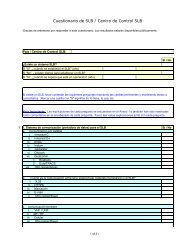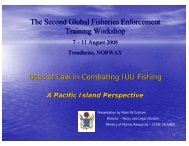1 Addressing Illegal, Unreported and Unregulated (IUU ... - OECD
1 Addressing Illegal, Unreported and Unregulated (IUU ... - OECD
1 Addressing Illegal, Unreported and Unregulated (IUU ... - OECD
Create successful ePaper yourself
Turn your PDF publications into a flip-book with our unique Google optimized e-Paper software.
Catches of high seas species10million tons8642019501955196019651970197519801985199019952000TunasOther epipelagicspeciesDeep water species(source: FAO)4. Actions taken so farOver the past decade, as <strong>IUU</strong> fishing on the high seas has been increasingly recognised as a problem,several national <strong>and</strong> international initiatives have seen the light of day. Some measures have been taken bypublic authorities (national or international) while others have been private initiatives by stakeholdersintimately involved in fisheries.Irrespective of the measures taken <strong>and</strong> by whom, it has become clear that only a massive effort involvingall stakeholders, but in particular those of private operators that have a direct economic stake in thefisheries, is needed to stop <strong>IUU</strong> high seas fishing activities. This follows from the role that eachstakeholder group is able to fulfil the type of information they are capable of collecting <strong>and</strong> their interest(economic, social or environmental) in seeing this activity stopped. Based on an on-going <strong>OECD</strong> survey,the following reviews the major international, RFMO, national <strong>and</strong> private instruments set up to combat<strong>IUU</strong>.International measures 5Although the high seas are open to all states (whether coastal or l<strong>and</strong>-locked), freedom of the high seas <strong>and</strong>governance of high seas fisheries are subject to the basic conditions set out in the 1982 United NationsConvention on the Law of the Sea (LOS Convention). High seas fisheries are high seas stocks, highlymigratory resources <strong>and</strong> straddling stocks. Such resources are usually managed through regional fisheriesmanagement organisations. In addition to the LOS Convention, the current international instrumentsrelated to high seas fisheries are:1993 FAO Compliance Agreement (Compliance Agreement)1995 UN Fish Stock Agreement (Fish Stock Agreement)1995 FAO Code of Conduct for Responsible Fisheries (the Code)2001 FAO International Plan of Action on <strong>IUU</strong> fishing (IPOA-<strong>IUU</strong>)Among existing instruments, the Compliance Agreement <strong>and</strong> the UN Fish Stock Agreement are legallybinding international instruments <strong>and</strong> contain a range of requirements relating to flag State responsibilities,5See also Annex 2 which provides a history of the international actions <strong>and</strong> initiatives to combat <strong>IUU</strong>.5



